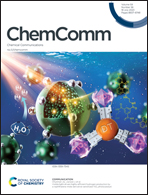Lead-free perovskite-inspired semiconductors for indoor light-harvesting – the present and the future
Abstract
Are lead-free perovskite-inspired materials (PIMs) the wise choice for efficient yet sustainable indoor light harvesting? This feature article outlines how wide-bandgap PIMs can provide a positive answer to this compelling question. The wide band gaps can hinder sunlight absorption, in turn limiting the solar cell performance. However, PIMs based on group VA of the periodic table can theoretically lead to an outstanding indoor power conversion efficiency up to 60% when their band gap is ∼2 eV. Yet, the research on PIM-based indoor photovoltaics (IPVs) is still in an early stage with highest indoor device efficiencies up to 10%. This article reviews the recent advancements on PIMs for IPVs and identifies the main limiting factors of device performance, thus suggesting effective strategies to address them. We emphasize the poor operational stability of the IPV devices of PIMs being the key bottleneck for the vast adoption of this technology. We believe that this report can provide a solid scaffolding for further researching this fascinating class of materials, ultimately supporting our vision that, upon extensive advancement of the stability and efficiency, PIMs with wide bandgap will become a contender for the next-generation absorbers for sustainable indoor light harvesting.

- This article is part of the themed collections: Perovskites and ChemComm Most Popular 2023 Articles


 Please wait while we load your content...
Please wait while we load your content...